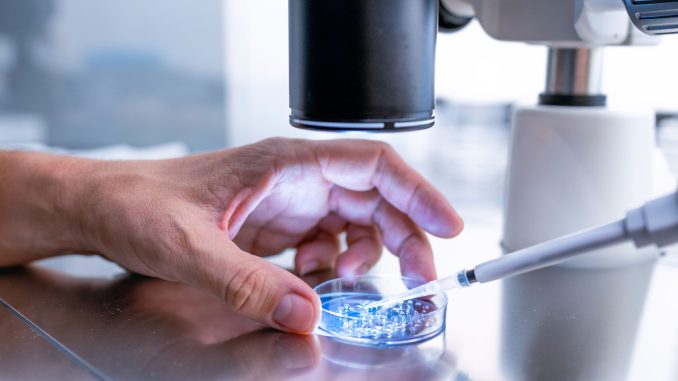
he Democrat-controlled Senate Judiciary held a hearing on and the future of reproductive rights.
One witness, a female doctor from Texas, went so far as to say that she supported abortion with no restrictions.
On the other hand, Sen. Lindsey Graham, R-S.C., highlighted the need to have strong regulations to govern the practice of IVF, potentially as Germany does.
Still, the question of IVF prompted a fraught discussion that cut through bipartisan lines.
While Democrats push for unlimited access to VF, many Republicans—especially strongly pro-life ones—have been tongue-tied. When pressed, most Republican leaders have claimed theyre both “pro-ife and pro-IVF.”
Presumably, they are thinking about the children born through IVF each year—who make up 2.3% of all births in the United States. But what about the other embryos; namely, the ones we never see? Each year, millions of embryos perish either intentionally or as a byproduct of IVF.
Preliminary data from 2021 Assisted Reproductive Technology Fertility Clinic and National Summary Report from the Centers for Disease Control and Prevention (CDC) shows that “approximately 238,126 patients had 413,776 cycles … [resulting in] 97,128 live born infants.”
In other words, IVF has an overall success rate of 23%the ratio of “cycles” to live births. Thse are low odds. For women 40 years and older, in vitro fertilization provides less than a 10% chance of success.
But notice what’s missing: he ratio of the total number of created embryos to those that result in a live birth. The 23% success rate for IVF only refers to the number of IVF cycles and not the number of embryos created in each cycle.
To increase thse low odds of success, fertility clinics routinely create a large surplus of embryos so that they have more options to choose from.
No broad recommendations or laws dictate the number of embryos created in an average IVF cycle; nor are there any laws that require clinics to report how many they create. Typically, the number of embryos created depends on factors such as the age of the eggs, their quality, and any underlying health problems.
One report from the United Kingdom suggested an average of 15 embryos are created in each cycle, with only 7% of all created embryos resulting in a live birth. The number is likely somewhere between eight and embryos created in a single cycle of IVF—which is much higher than the number of children most parents intend to have.
For the sake of argument, however, let’s estimate that only 10 embryos are created in an average cycle of IVF. Using 2021 data from the CDC, th means that the 413,776 rounds of IVF resulted in the creation of 4.1 million embryos. That would mean that only 2.3% of all embryos created in the United States result in the live birth of a child.
The other 97%, or 4 million embryos, are variously
- willfully or accidentally destroyed
- frozen for later use
- placed for adoption
- donated to research, or
- fail to implant when transferred into the womb.
For the embryos involved, the success rate is very low indeed.
Republicans need to work out the logic of their commitment to protect life from the moment of conception. If IVF, as it is typically practiced, routinely destroys human life, it’s understandable that Democratic senators question the consistency of an unfiltered “pro-life and pro-IVF” stance. Embryonic life—in the womb or in a petri dish—must be honored as fellow human beings.
Why should someone’s size or ability determine his or her right to live? Embryos may be harder to see or relate to as people, but each of us was once an embryo.
With 2.3% of the 4.1 million embryos created each year through IVF resulting in the birth of a child, the process as currently practiced in the US is far from “pro-life.”
If we believe that life begins at conception, then any consistent pro-life ethic w apply that to embryos.
Have an opinion about this article? To sound off, please email letters@DailySignal.com and we’ll consider publishing your edited remarks in our regular “We Hear You” feature. Remember to include the url or headline of the article plus your name and town and/or state.

